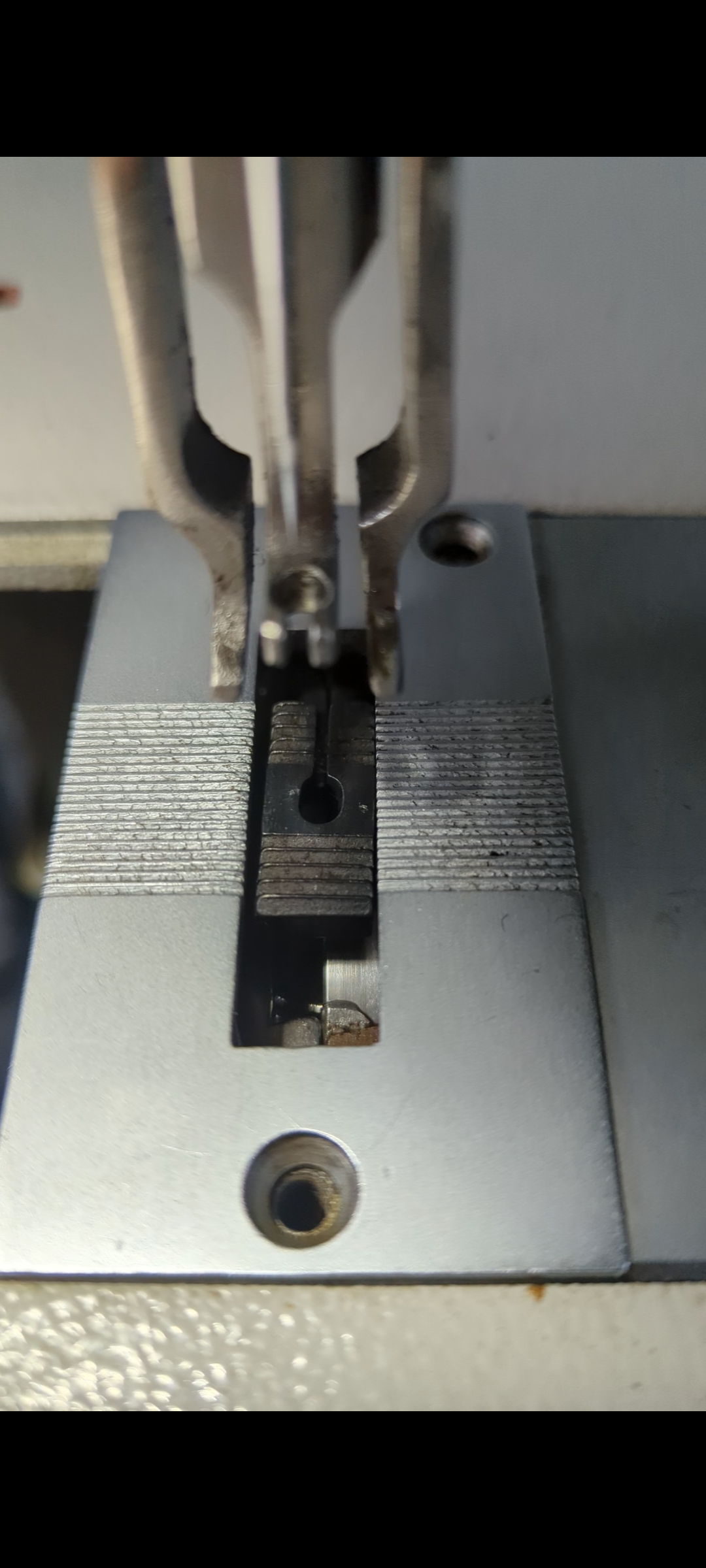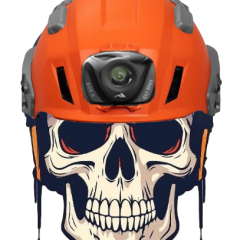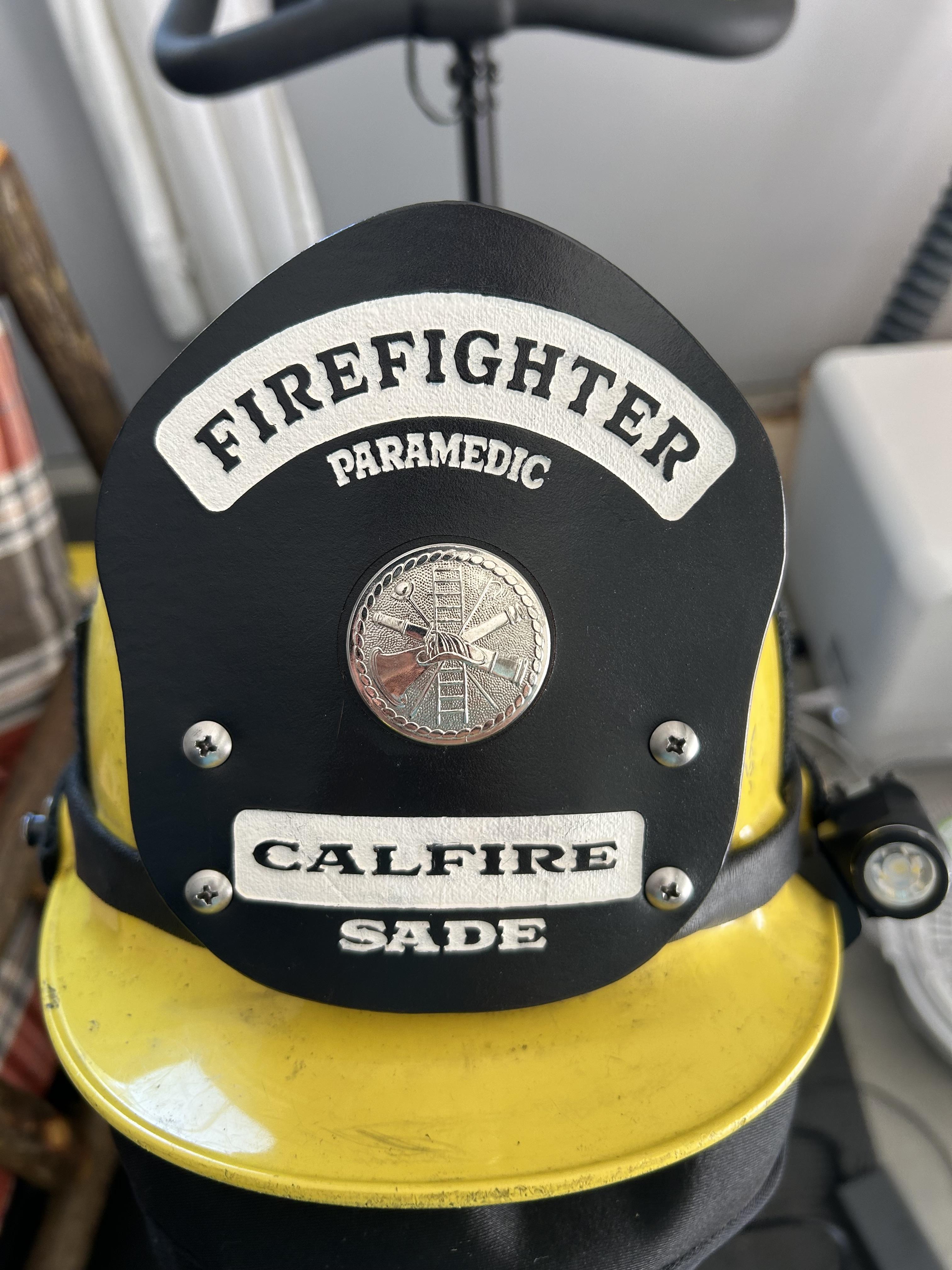All Activity
- Past hour
-

Choosing durable dog collar thread... linen, Nylex etc...?
chuck123wapati replied to LakeOtter's topic in Sewing Leather
Ritza tiger thread is good stuff it works great on outdoor gear as well as indoor. Any thread will wear and fail if you don't set it into a groove; that's the key for dog collars and such especially. -
That's what I use too
-
I think the machine was produced till late fifties. Similar knob was also used in 238 but not in later 438. Such parts are not available any more, if you are lucky you can find sometimes something on ebay. Otherwise, just glue it together. I did this with the one I stupidly broke when cleaning the machine.
-
Thank you, I have those also lol. I ike these over hatchets because they are so light and the thin blade cuts better. They are excellent for backpacking or foraging. I have a sweet little double-bit hatchet that I carry sometimes when hunting also. LOL ironically, today is opening day of the season.
-
Thanks, yeah I heard that, so just how many folks over there are doing bad things with machetes to get them banned? The reason i made this was that i have a couple of cheap machetes that I cut down and found they are better suited for me that way. The grip finally broke on one of them, and I wanted one made a bit better so i used it as a pattern.
-
thanks, it came out better than expected. I've had this bottle for years, so didn't even know if it was still good, and it was an experiment that worked out for a change lol.
-
lol They are like pets here, they run around all over town. Its great to watch the fawns grow up every year. These just got their winter coats.
-
I hope the picture helps. It is the plastic or bakelite knob that is broken (this image is from the net)
- Today
-

Just got a Consew 255RB. It needs an oil pan.
Constabulary replied to Stagesmith's topic in Leather Sewing Machines
I´m aware of that, I have several, incl a 212 Singer (2 needle version of 211) which is basically the mother of your 255. Mine also has a reservoir under the top lid. But sometimes clone machines come with upgrades. So if you need just a drip pan with no oil reservoir you have to look for one with enough depth. I´d still contact a Consew dealer and order one. Maybe these folks in Seattle: https://www.chholderby.com/ -
Actually I just noticed feed dog seems to be bent on that pic... Maybe it is and I should buy a new one before trying any other ajustement !
-
@friquant thank you so much ! I had a different version of the manual that did not show this adjustment @AlZilla true, I confirm and cheked. I added a picture with needle plate in position showing that issue clearly comes from feed dog placement
-
Thanks, I guess I'll have to give it a try.
-
Just got a Consew 255RB. It needs an oil pan.
Stagesmith replied to Stagesmith's topic in Leather Sewing Machines
There is an oil reservoir in the top of the machine. Running the machine feeds oil through multiple internal lines until it drips off the bottom of the machine. It really is an industrial machine. -
Butterfly steaks from the tenderloin, or round steaks for dinner tonight?? Oh, nice Machete and scabbard:)
-
Same here. Weldwood contact cement. Do have plenty of good ventilation when using.
-
Choosing durable dog collar thread... linen, Nylex etc...?
DieselTech replied to LakeOtter's topic in Sewing Leather
I myself would use a UV treated polyester thread in 277 or 346 size. I think you can even get it in waxed version. -
I use the red can Weldwood for most projects. It is good for most applications. I also use wood glue Titebond or other brands for some other things.
-
I use good fashion contact cement. I don't think the brand name really matters much. What I have found that bests works for me and gives me the best holding is to apply one coat on the flesh (fuzzy) side of the pieces, let dry then add a second coat until dry (about 10 -15 minutes), mate the two pieces, use a roller to evenly press the pieces together, clamp or weight down the pieces and let sit for 12-24 hours. My theory is the first coat of contact cement sinks into the fibres and binds them together. The second coat holds both surfaces permanently together. I have found sometimes with only one coat of contact cement the two pieces can be pulled apart. kgg
-
That's a great looking case (scabbard? Sheath? Bladeprophylactic?) Kidding aside, I haven't used a machete, but it looks pretty awesome too. More often in my experience, axes or hatchets are used. They may not be legal in Australia, but I think we can still have them in Canada and parts of the UK
-
That weldwood contact cement is pretty much all I use. Even a couple odd projects that didn't get sewn after gluing it holds. The trick like alot of other glues is the set time before sticking pieces together. Spread it on both pieces that's going together and let it set for 20 minutes or so till it doesn't even really feel tacky anymore. Then you want be able to pull 2 pieces apart without damage. I buy it by the gallon from lowes or home depot home improvement stores. It's cheaper in store then most places online.
-
Newer to leather working and work as a Firefighter paramedic. One of my goals since I started in this field was to make my own fire shield and finally got to do it. For next time I’ll raise the screw holes so it fits more snug to the helmet brim but there is always room for improvement. One question I have I decided this time to paint the shield black with my airbrush and Angelus leather paint and sealed it with acrylic resoline one things I’m worried about is the durability of the paint if it will end up scratching easily or not. I also understand it being I’ll take heat and abuse due to my job but want to try to best protect it for longevity and having a better end product. The leather weight I used was 15 ounce. Thanks for any help or advice
-
Your branch of the SCA is the bestest resource. I used to use archaeologists reports for ideas and draw my own patterns from them. I also used to use Olaf Goubitz book 'Purses in Pieces', 'Shoes and Pattens' by Grew, 'Scabbards' by Cameroon, 'Knives and Scabbards' by Cowgill, and an SCA publication on making shoes The SCA used to have hundreds of patterns for items on a website. All free to down-load. I've been out of it all for 20 years so I don't know if it still exists. Ask at your local branch
-
I use contact cement all the time for gluing my leather projects.
- Yesterday
-
Hello and thanks in advance. I have more tooling practice, by far, than sewing, and so I'm studying two handed saddle stitching, got a pony, etc. I just want to chose a saddle stitching thread that is practical for durable use on H. Oak veg tan butt dog collars I'll be concentrating on, and trying to eventually get a few into the local tack shop with tooled designs. And I'd like to get used to what I'll continue to use, up front, and not start all over, soon, with how something behaves. I have been looking at saddle stitch info... Al Stohlman was back in the day and, even today, Jo H. is purposefully traditional. These sources recommend non-waxed linen thread, because they recommend not waxing the ends so that better ends can be made But what about my modern options like the awesome sticky thread mentioning Nylex in passing? Synthetics sound durable, and I've seen a burner tool... maybe that helps with "proper ends" in this manner? I just want a reliable product; I don't thing my customers will care if it's synthetic. The main feature is some hand-tooled designs and custom lettering. Thank you for your thoughts (or links) on pros and/or cons of threads, pre-waxed or otherwise. Jeff, Silver Springs FL, Ocala Forest









